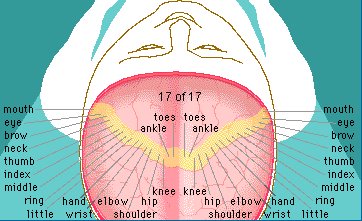Compare non war PTSD and war PTSD read below on war ptsd and see how you compare if you have trauma in your life.
Given that high rates of comorbid chronic pain diagnoses are likely in PTSD treatment-seeking veterans, considering how this might influence treatment planning becomes salient. Studies suggest that the comorbidity of PTSD and pain may profoundly affect psychosocial and physical functioning as well as quality of life [51-54]. From a theoretical perspective, the concept of "mutual maintenance" of pain and PTSD becomes important to consider [45,48]. Similar to the theory of shared vulnerability, the mutual maintenance hypothesis proposes that the cognitive, affective, psychophysiological, and behavioral symptoms of both disorders react in synergistic ways. For example, a patient with PTSD who develops a back problem may overreact to the painful stimuli (e.g., as though it were life-threatening). Thus, the patient becomes more likely to avoid any situation that he or she believes may trigger pain in addition to the situations he or she avoids for fear of triggering memories of the trauma. The result of this cycle of avoidance is increased restriction and disability. Fortunately, cognitive-behavioral treatment programs that emphasize the importance of exposures to feared situations in a safe and controlled manner are recommended for both PTSD and chronic pain problems [55-56]. Further, these treatment programs address underlying maladaptive cognitions (e.g., belief that back pain is life-threatening) through cognitive restructuring. Given that cognitive behavioral interventions are empirically supported for the treatment of both PTSD and chronic pain and that these programs may target mutually maintaining factors (e.g., avoidance behavior), examining the effect of PTSD treatment on chronic pain is important.
Unfortunately, very few PTSD treatment studies have also directly examined the effect of the treatment on pain problems and most are case studies. A study of three patients with both pain and PTSD revealed that while pain treatment was not effective, PTSD treatment was useful [29]. Similarly, in a small study of headache patients, no improvement was shown until the PTSD symptoms were addressed in patients with both headaches and PTSD [57]. In contrast, at a recent case conference, experts discussed a single patient with pain and PTSD for whom PTSD treatment was not effective [58-59], although leaders in the field had all recommended this approach [60-62]. Shipherd and colleagues investigated the effect of PTSD treatment on chronic pain with a sample of six women with chronic pain and PTSD after car accidents [63]. These women received 12 weeks of manualized cognitive behavioral PTSD treatment that explicitly avoided discussion of pain-related issues. Results indicated a decrease in PTSD symptoms as well as in other psychiatric symptoms for most patients. Although subjective pain ratings did not change posttreatment, pain-related functional improvements were noted, including a return to full-time work for the majority of participants. These results suggest that the benefits of PTSD treatment may generalize to comorbid chronic pain problems. However, importantly, the treatment took place in a carefully controlled research context that may or may not be applicable to naturally occurring treatment venues [64]. The studies conducted to date on the effects of PTSD treatment on comorbid chronic pain complaints have all been small sample studies with some promising results. However, large-scale controlled studies of the effects of PTSD treatment on pain have not yet been published. Another limitation of the existing literature is that the treatments have been conducted in small controlled trials, in spite of the availability of large databases of naturally collected data from PTSD treatment (e.g., VA databases) that have yet to be fully explored in this regard. The current study is one attempt to use this preexisting data to better understand the prevalence of chronic pain problems in patients with PTSD and to explore whether any changes occur in pain ratings before, during, or after PTSD treatment.
http://www.rehab.research.va.gov/jour/2/shipherd.html07/44/
Subscribe to:
Post Comments (Atom)

http://www.windyweb.com/stop.htm














No comments:
Post a Comment